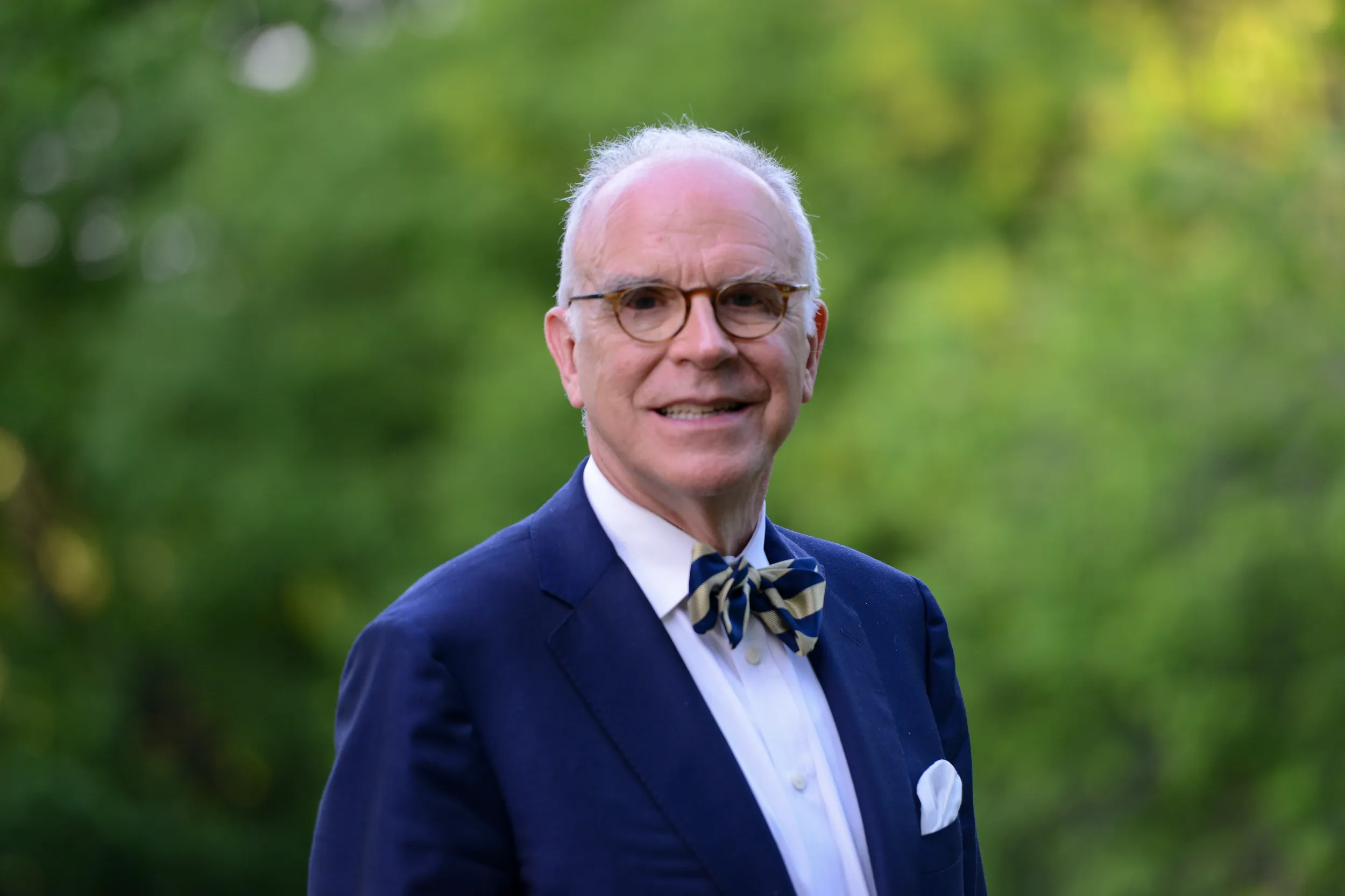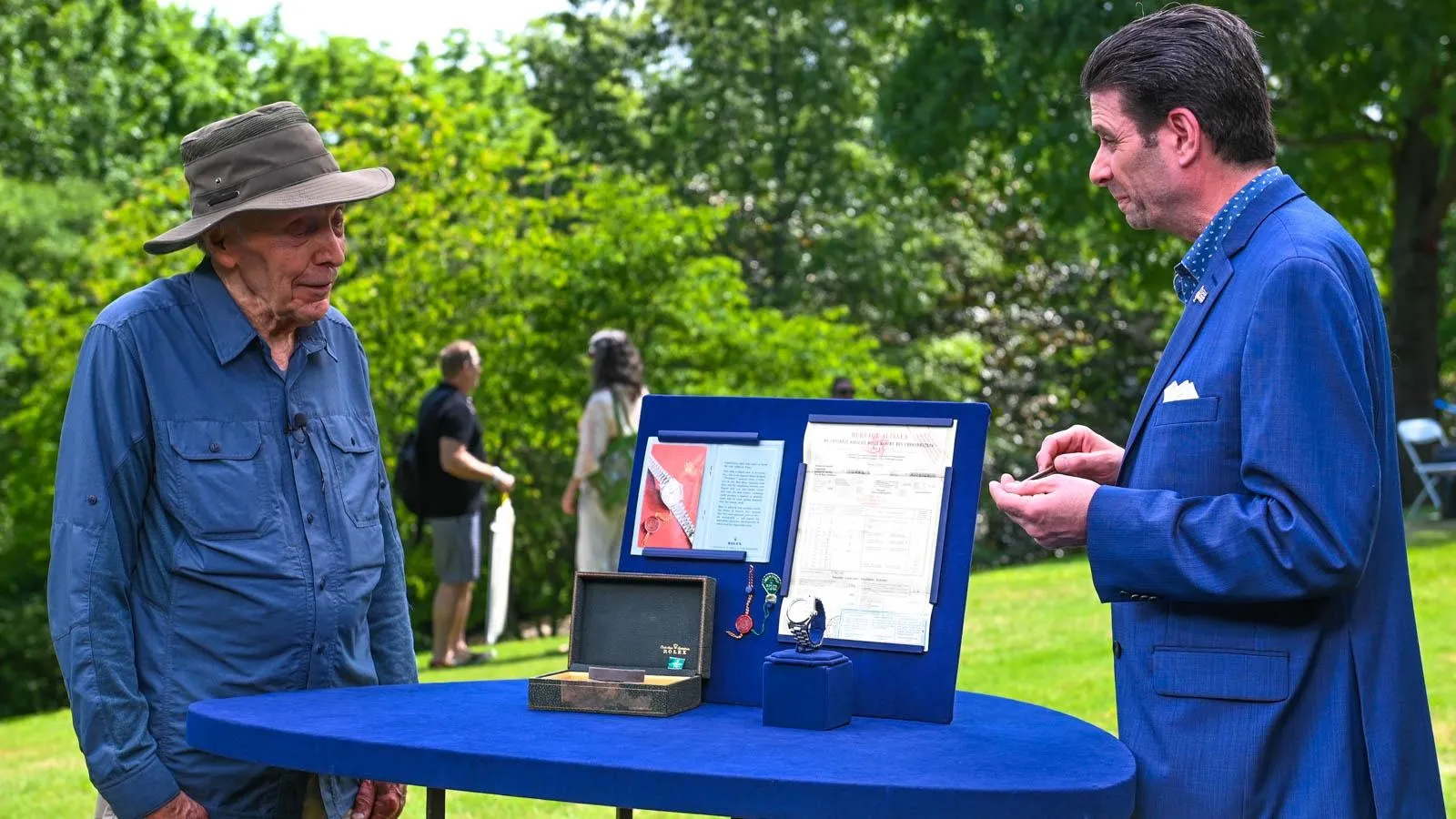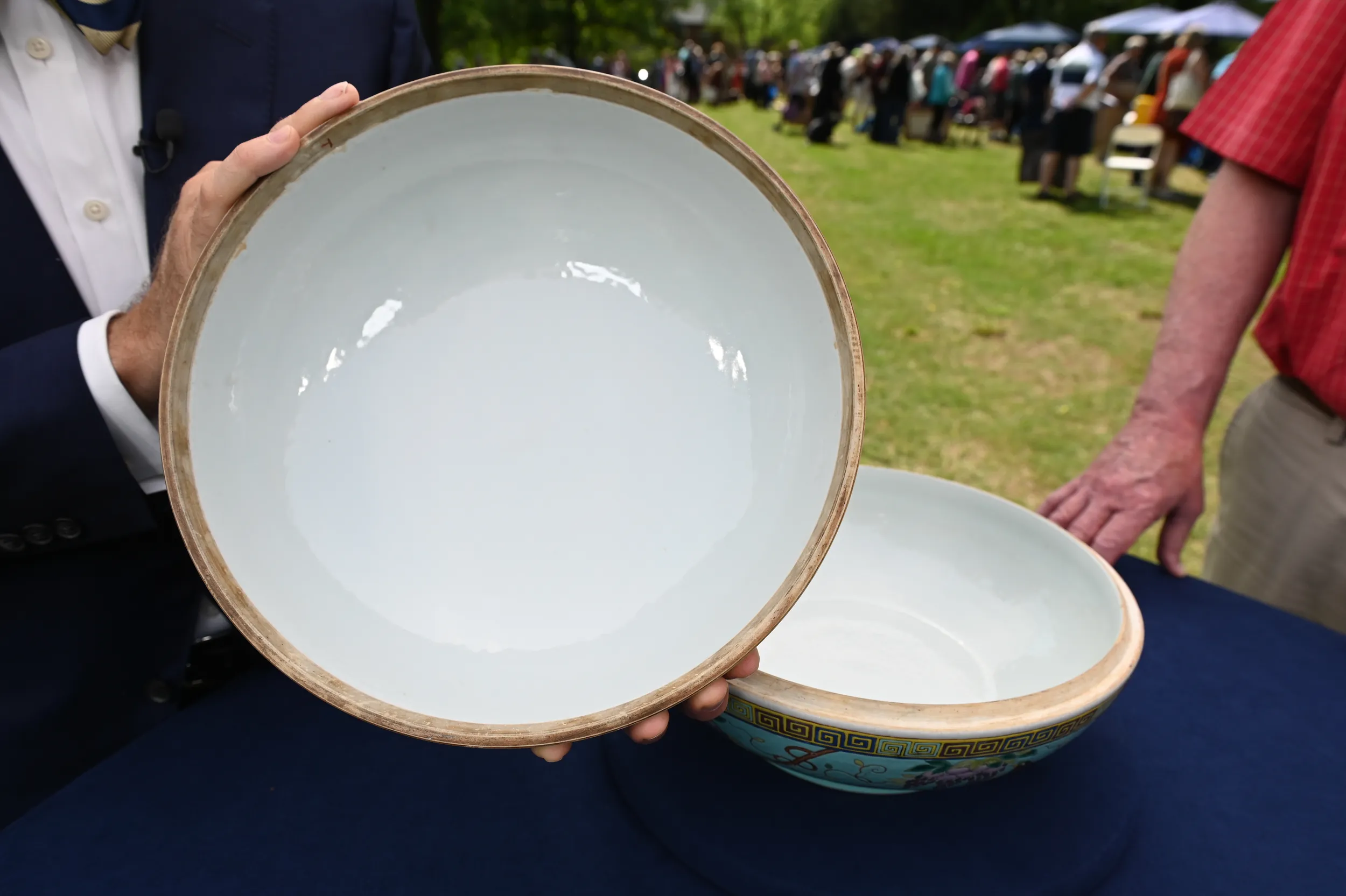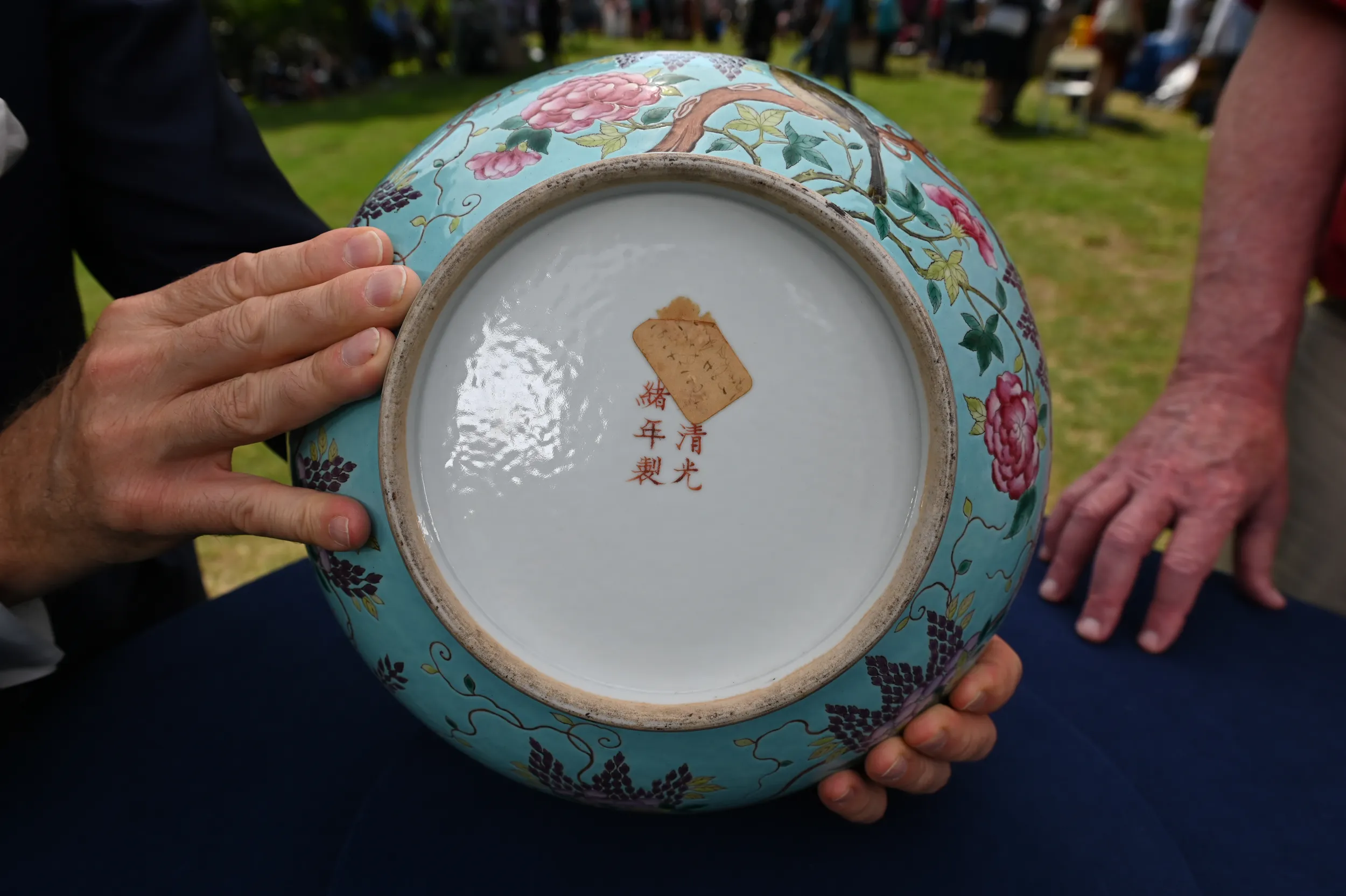GUEST: This bowl came into our family as a wedding gift from Madame Chiang Kai-shek and Madame Sun Yat-sen. They attended Wesleyan College in Macon, Georgia, and my step-great-grandmother was the registrar there, and they became very friendly with her. And when she married my great-grandfather, this was given to our family in 1947 from the Soong sisters.
APPRAISER: The Soong family is one of the most important families of the entire 20th century. There were three sisters and a brother. Their family is referred to as the Soong Dynasty. And Mei-ling Soong, who is the one that your family is connected to particularly...
GUEST: Mm-hmm.
APPRAISER: ...was the first lady of the Republic of China, both in what we call today mainland China, People's Republic of China, and then later the first lady of the Republic of China in Taiwan. So this was given as a wedding gift. What do you know about this?
GUEST: I've heard it referred to as a box.
APPRAISER: This particular color palette is called dayazhai, which was a favorite color of the dowager empress of China, Cixi. She was the power behind the throne. That is in the late 19th, early 20th century. These were made not just as works of art, but they conveyed ideas of plenty, and prosperity, and harmonious life, a peaceful life, and inside would have been the gift.
GUEST: Oh, okay.
APPRAISER: So it's not just the box. The box carried the gift, but it carried this kind of meaning along with it because of the imagery.
GUEST: This would be kind of like the wrapping paper, so to speak.
APPRAISER: This was like the wrapping paper. It's enamel-decorated porcelain, and you rarely find such a large example. The body has this kind of what we call an orange peel effect.
GUEST: Okay.
APPRAISER: It's got a little bit of an unevenness.
GUEST: Right.
APPRAISER: Which is appropriate for something from the Guangxu period, 1875 to 1908. And I turn this over, we see in iron red a Chinese six-character mark that says this was made during the Guangxu period. As the first lady of China, she had access to all sorts of gifts that may have been housed within the auspices of various government warehouses and things.
GUEST: Okay.
APPRAISER: It would absolutely make sense she would have gone there and said, "I have an important gift that I want to give to someone who shaped my life and influenced me dramatically." Not just as a person, but because of where she was at Wesleyan and how that college shaped her life dramatically, and in turn, shaped the trajectory of the world.
GUEST: Mm-hmm.
APPRAISER: Literally.
GUEST: Mm-hmm.
APPRAISER: China is China because, to a large extent, of the things that the Soong family did. Taiwan most certainly is.
GUEST: Mm-hmm.
APPRAISER: And other world affairs have revolved around that family.
GUEST: Interesting.
APPRAISER: And your family has been brought into that because of their association with Wesleyan College in Macon, Georgia-- who would have ever thought?
GUEST (chuckling): Right. I know, I know, that's incredible.
APPRAISER: So do, would you like to venture what you think it might be worth?
GUEST: We had a, kind of a trash and treasures thing to raise money for one of the museums where we lived. And they said then that it was probably around $3,000 to $4,000, and that's probably 25 years ago. And that was a cursory thing where you paid ten dollars. Other than that, I don't really know.
APPRAISER: For an insurance appraisal, I would say a figure that would be more appropriate would be in the $30,000 range.
GUEST: Oh, is that right? Yikes.
APPRAISER: Auction setting probably around $15,000 to $25,000.
GUEST: Okay, okay. Well, we will continue to take care of it and continue to enjoy it.










